|
|
Details Liquid Silicone Rubber Injection Mold ManufacturingSilicone Rubber Properties  Liquid silicone rubber (LSR) molding is a thermoset process that mixes a two-component compound together, which is then heat cured in the mold with a platinum catalyst to produce a final part. LSR parts are formed through an injection-molding process similar to that of conventional plastic injection molding with one major difference — the material delivery system is cooled and the mold is heated. Silicone Rubber properties, with its low compression set, fast cure cycles, great stability and ability to resist extreme temperatures of heat and cold with liquid silicone rubber’s characteristics and chemical properties make it an ideal material for applications spanning several different industry verticals. Liquid silicone rubber (LSR) molding is a thermoset process that mixes a two-component compound together, which is then heat cured in the mold with a platinum catalyst to produce a final part. LSR parts are formed through an injection-molding process similar to that of conventional plastic injection molding with one major difference — the material delivery system is cooled and the mold is heated. Silicone Rubber properties, with its low compression set, fast cure cycles, great stability and ability to resist extreme temperatures of heat and cold with liquid silicone rubber’s characteristics and chemical properties make it an ideal material for applications spanning several different industry verticals.LSR parts are strong and elastic with excellent thermal, chemical and electrical resistance. They maintain their physical properties at extreme temperatures and can withstand sterilization. LSR parts are also biocompatible, so they work very well for products that have skin contact. Those benefits lend themselves well to automotive, medical and food appliance industries, typically in the form of seals, gaskets, valves and cables. Silicone Rubber Mold 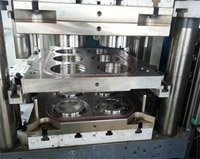 The rubber mold is created from a master pattern, typically an RP model. The pattern is used to create a silicone rubber mold. The silicone is poured around the pattern to produce a core and cavity of a mold. The RP model is then removed, leaving a negative image into which polyurethane is cast. In a molding project involving liquid silicone rubber, it is critical that the molder, the mold builder, and the molding press manufacturer communicate with one another clearly and cooperate to meet customer requirements. Failure to do so can dramatically affect the success of the project. The rubber mold is created from a master pattern, typically an RP model. The pattern is used to create a silicone rubber mold. The silicone is poured around the pattern to produce a core and cavity of a mold. The RP model is then removed, leaving a negative image into which polyurethane is cast. In a molding project involving liquid silicone rubber, it is critical that the molder, the mold builder, and the molding press manufacturer communicate with one another clearly and cooperate to meet customer requirements. Failure to do so can dramatically affect the success of the project.Why Lancor: 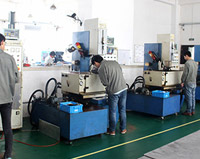 LANCOR Corporation specializes in Liquid Silicone Rubber molding(LSR molding) and many different types of rubber molded parts to our customers, we assure the quality of our silicone rubber molds and its’ by critically selecting the materials used, certification of these materials and also by constantly inspecting all individual parts, from extremely tight tolerance, miniature, extra-large, reverse engineered, customer designed, to color and rubber to metal. They were all custom made in material that best suited for the application, delivered on time.. By constantly inspecting and optimizing our processes, we aim to ensure product quality and to continue to improve. LANCOR Corporation specializes in Liquid Silicone Rubber molding(LSR molding) and many different types of rubber molded parts to our customers, we assure the quality of our silicone rubber molds and its’ by critically selecting the materials used, certification of these materials and also by constantly inspecting all individual parts, from extremely tight tolerance, miniature, extra-large, reverse engineered, customer designed, to color and rubber to metal. They were all custom made in material that best suited for the application, delivered on time.. By constantly inspecting and optimizing our processes, we aim to ensure product quality and to continue to improve. Lancor understands this critical need and works closely with its mold building and press manufacturer partners to achieve optimum results. We and our partners share not only detailed specifications with one another but also our experiences in molding liquid silicone rubber. As familiar and experienced as we are with LSR molding techniques, each of us has unique and intimate knowledge of our specialty. Each of our custom molded parts must meet rigorous quality and technical specificationto ensure efficiency and safety across applications, Lancor’s LSR molding experience and capability will make sure your rubber projects are successful and more valuable. Silicone Rubber Mold Manufacturing  Starting LSR mold produce, Lancor will then design an LSR molding tool. Due to the flexible nature of LSR, parts are manually removed from the mold, and thus, ejector pins are not built into the mold design. Like a standard Protomold aluminum tool, an LSR molding tool is fabricated using a combination of CNC milling and CNC electrical-discharge machining (EDM) to create a high-temperature aluminum tool built to withstand the LSR molding process. After milling, the tool is polished by hand to customer specifications, which allows six standard surface finish options: PM-F0, PM-F1, SP-C1, PM-T1, PM-T2 or SPI-A2. Others may be available by request. Starting LSR mold produce, Lancor will then design an LSR molding tool. Due to the flexible nature of LSR, parts are manually removed from the mold, and thus, ejector pins are not built into the mold design. Like a standard Protomold aluminum tool, an LSR molding tool is fabricated using a combination of CNC milling and CNC electrical-discharge machining (EDM) to create a high-temperature aluminum tool built to withstand the LSR molding process. After milling, the tool is polished by hand to customer specifications, which allows six standard surface finish options: PM-F0, PM-F1, SP-C1, PM-T1, PM-T2 or SPI-A2. Others may be available by request.Quality Assurance 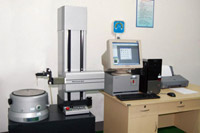 Our personnel are experts in inspection methods and have extensive experience utilizing a combination of conventional and state of the art computer assisted inspection technologies. We offer inspection of parts that we have fabricated as well as contracted inspection of parts fabricated elsewhere. Our quality system software provides intuitive measurement programming right from your CAD files offering more accurate and faster programming. Results from our equipment can be transferred to SPC analysis. Consulting is provided to guide customers in areas such as tolerance feasibility, geometric tolerance, measuring practices and print interpretation. Our personnel are experts in inspection methods and have extensive experience utilizing a combination of conventional and state of the art computer assisted inspection technologies. We offer inspection of parts that we have fabricated as well as contracted inspection of parts fabricated elsewhere. Our quality system software provides intuitive measurement programming right from your CAD files offering more accurate and faster programming. Results from our equipment can be transferred to SPC analysis. Consulting is provided to guide customers in areas such as tolerance feasibility, geometric tolerance, measuring practices and print interpretation. WHICH RUBBER MATERIALS SHOULD YOU CHOOSE? 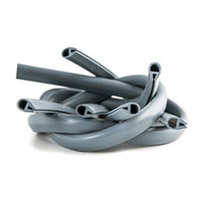 If you need a rubber product that can withstand difficult environments, silicone rubber can be an excellent choice for your applications. Silicone rubber offers great resistance in extreme temperatures, being able to operate normally from -100°C to +250°C (-150°F to +480°F). At extreme temperatures, the tensile strength, elongation, tear strength and compression set can be far superior to conventional rubbers. This makes it one of the materials of choice in many extreme environments. If you need a rubber product that can withstand difficult environments, silicone rubber can be an excellent choice for your applications. Silicone rubber offers great resistance in extreme temperatures, being able to operate normally from -100°C to +250°C (-150°F to +480°F). At extreme temperatures, the tensile strength, elongation, tear strength and compression set can be far superior to conventional rubbers. This makes it one of the materials of choice in many extreme environments.In addition to temperature resistance, silicone rubber offers other advantages, such as insulation from electricity and the ability to repel water. Because of these advantages, silicone rubber is a versatile material for many industries. It is non-conductive, maintains dielectric strength (can be formulated to be conductive), and can be color matched to any Pantone standard color. DESCRIPTION &PROPERTIES
EPDM RUBBER PARTS  EPDM is one of the most widely used synthetic rubbers. EPDM rubber is a high density rubber primarily used for outdoor applications. It has dynamic and mechanical properties between natural rubber and synthetic rubber. EPDM is one of the most widely used synthetic rubbers. EPDM rubber is a high density rubber primarily used for outdoor applications. It has dynamic and mechanical properties between natural rubber and synthetic rubber.EPDM rubber is an extremely versatile material that can be used in a variety of applications, from automotive products to HVAC parts. It also acts as a less expensive alternative to silicone and can last for long periods of time with proper use, saving you time and money. DESCRIPTION &PROPERTIES
Neoprene Rubber, also known as neoprene polychloroprene, is an extremely versatile synthetic rubber with more than 75 years of proven performance. Timco Rubber specializes providing neoprene rubber manufactured for industrial materials and parts. As a multipurpose elastomer, neoprene rubber can be used to fit a wide variety of consumer products thanks to benefits like outstanding toughness and various resistances. In the automotive world, neoprene is used for many under-the-hood and underbody parts that require a reasonably priced, mid-performance polymer with a good all-around balance of performance properties. Our manufactured neoprene rubber parts and materials can also be used for several other industries, including mass transit, wire and cable, and construction. DESCRIPTION &PROPERTIES
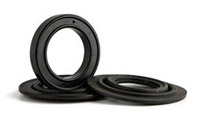 Fluoroelastomers offers the widest range of fluid and chemical resistance of any commercial rubber. It has excellent resistance to oils, fuels, lubricants and most mineral acids, this high performance synthetic rubber also has excellent temperature resistance. It also offers low gas permeability. Fluorine content can be increased or reduced to improve key performance properties required by your application. Fluoroelastomers offers the widest range of fluid and chemical resistance of any commercial rubber. It has excellent resistance to oils, fuels, lubricants and most mineral acids, this high performance synthetic rubber also has excellent temperature resistance. It also offers low gas permeability. Fluorine content can be increased or reduced to improve key performance properties required by your application.DESCRIPTION & PROPERTIES
 Fluorosilicone rubber is an inorganic "hybrid" elastomer which combines the wide temperature range spectrum of silicone with some of the chemical resistance of fluorocarbon rubber. Due to its silicone base, fluorosilicones have relatively low tear strength, abrasion resistance, and tensile strength, and therefore, are generally not suited to dynamic applications. DESCRIPTION &PROPERTIES
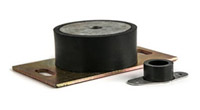 Natural rubber is fairly easy to process. It has good low temperature properties, excellent elongation and a high resistance to tears and abrasions. Its useful temperature range is between -60ºF and + 170ºF, and it can be easily bonded to metal. Unfortunately natural rubber exhibits poor resistance to ozone, oxygen, sunlight, solvents and oils. Natural rubber is fairly easy to process. It has good low temperature properties, excellent elongation and a high resistance to tears and abrasions. Its useful temperature range is between -60ºF and + 170ºF, and it can be easily bonded to metal. Unfortunately natural rubber exhibits poor resistance to ozone, oxygen, sunlight, solvents and oils.DESCRIPTION &PROPERTIES
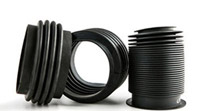 Nitrile rubber is best suited for applications where resistance to oil, fuel and chemicals is required. NBR is commonly used for industrial and automotive applications, in products such as fuel and oil handling hoses, seals, grommets, hydraulic hoses, and o-rings. Nitrile rubber is best suited for applications where resistance to oil, fuel and chemicals is required. NBR is commonly used for industrial and automotive applications, in products such as fuel and oil handling hoses, seals, grommets, hydraulic hoses, and o-rings.DESCRIPTION &PROPERTIES
If this product Not the products you want: Mail , Or click here Post a buy information about product to us. |
